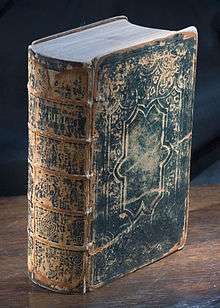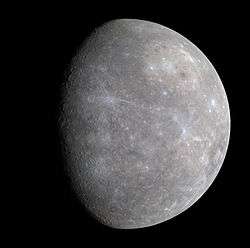Legacy of the Roman Empire
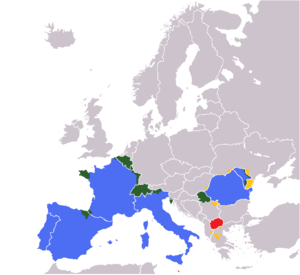
]]
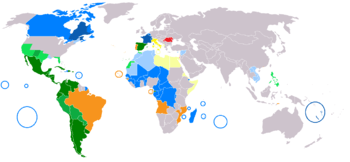
Blue – French; Green – Spanish; Orange – Portuguese; Yellow – Italian; Red – Romanian
The legacy of the Roman Empire is the set of cultural values, religious beliefs, and the technological and other achievements of Ancient Rome that were passed on after the demise of the empire itself and continued to shape other civilizations, a process which continues to this day. The city of Rome was the civitas, from which came the word "civilization" and consequently the actual western civilization on which is centered the contemporary world.
Language
Latin was the lingua franca of the early Roman Empire and later the Western Roman Empire, while particularly in the East indigenous languages such as Greek and to lesser degree Egyptian and Aramaic language continued to be in use. Despite the decline of the Western Roman Empire, the Latin language continued to flourish in the very different social and economic environment of the Middle Ages, not in the least because it became the official language of the Roman Catholic Church. Koine Greek, which served as a lingua franca in the Eastern Empire, is still used today as a sacred language in some Eastern Orthodox churches.
In Western and Central Europe and parts of Africa, Latin retained its elevated status as the main vehicle of communication for the learned classes throughout the medieval period well into the Renaissance and Baroque periods. Works which made a revolutionary impact on science, such as Nicolaus Copernicus' De revolutionibus orbium coelestium (1543) were composed in Latin, which was not supplanted for scientific purposes by modern languages until the 18th century, and for formal descriptions in zoology and botany survived to the later 20th century:[1] the modern international Binomial nomenclature holds to this day that the scientific name of each species is classified by a Latin or Latinized name.
Today the Romance languages, which comprise all languages that descended from Latin, are spoken by more than 800 million native speakers worldwide, mainly in the Americas, Europe, and Africa. Romance languages are either official, co-official, or significantly used in 72 countries around the Globe.[2][3][4][5][6][7]
Additionally, Latin had a great influence on both the grammar and the lexicon of West Germanic languages. Romance words make respectively 59%, 20% and 14% of English, German and Dutch vocabularies.[8][9][10] Those figures can rise dramatically when only non-compound and non-derived words are included. Accordingly, Romance words make roughly 35% of the vocabulary of Dutch.[10]
Script

All three official scripts of the modern European Union—Latin, Greek and Cyrillic—descend from writing systems of the Roman Empire. Today, the Latin script, the script of the Latin alphabet spread by the Roman Empire to most of Europe, and derived from Phoenician alphabet through an ancient form of Greek alphabet adopted and modified by Etruscan, is the most far-spread and commonly used script in the world. Spread by various colonies, trade routes, and political powers, the script has continued to grow in influence. The Greek alphabet, which had been popularized throughout the eastern Mediterranean region during the Hellenistic period, remained the primary script of the Eastern Empire through the Byzantine Empire until its demise in the 15th century.
Latin literature
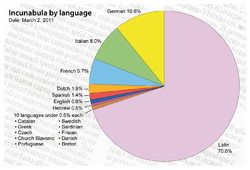
The Carolingian Renaissance of the eighth century rescued many works of Latin from oblivion: manuscripts transcribed at that time are our only sources for works that later fell into obscurity once more, only to be recovered during the Renaissance: Tacitus, Lucretius, Propertius and Catullus are examples.[12] Other Latin writers were always read: Virgil was reinterpreted as a prophet of Christianity by the fourth century, and gained the reputation of a sorcerer in the twelfth century.
Cicero, in a limited number of his works, remained a model of good style, mined for quotations. Ovid was read with a Christian allegorical interpretation. Seneca was reimagined as the correspondent of Saint Paul. Lucan, Persius, Juvenal, Horace, Terence, and Statius survived in the continuing canon and historians Valerius Maximus and Livy continued to be read for the moral lessons history was expected to impart.
Through the Roman Empire Greek literature also continued to make an impact in Europe long after the Empire's fall, especially after the recovery of Greek texts from the East during the high Middle Ages and the resurgence of Greek literacy during the Renaissance. Plutarch's Lives of the Noble Greeks and Romans, for instance, originally written in Greek, was widely read by educated Westerners from the Renaissance up to the 20th century. Shakespeare's play Julius Caesar takes most of its material from Plutarch's biographies of Caesar, Cato and Brutus, whose exploits were frequently discussed and debated by the literati of the time.
Calendar and measurement
The modern Western calendar is a refinement of the Julian calendar, which was introduced by Julius Caesar. The calendar of the Roman Empire began with the months Ianuarius (January), Februarius (February), and Martius (March).
The modern seven-day week follows the Greco-Roman system of planetary hours, in which one of the seven planets that were known in ancient times—Saturn, Jupiter, Mars, the Sun, Venus, Mercury and the Moon—is given "rulership" over each day. The Romance languages preserve the original Latin names of each day of the week, except for Sunday, which came to be called dies dominicus (Lord's Day) under Christianity.
This system for the days of the week spread into Celtic and Germanic peoples before the collapse of the empire, where the names of comparable gods were substituted for the Roman deities. In Germanic languages, for instance, Thor stood in for Jupiter (Jove), yielding "Thursday" from the Latin dies Iovis.
Numerals and units

Roman numerals continued as the primary way of writing numbers in Europe until the 14th century, when they were largely replaced in common usage by Hindu-Arabic numerals. The Roman numeral system continues to be widely used, however, in certain formal and minor contexts, such as on clock faces, coins, in the year of construction on cornerstone inscriptions, and in generational suffixes (such as Louis XIV or William Howard Taft IV).
The Romans solidified the modern concept of the hour as one-24th part of a day and night. The English measurement system also retains features of the Ancient Roman foot (11.65 modern inches), which was used in England prior to the Anglo-Saxon settlement of Britain. The inch itself derives from the Roman uncia, meaning one-twelfth part.
Religion
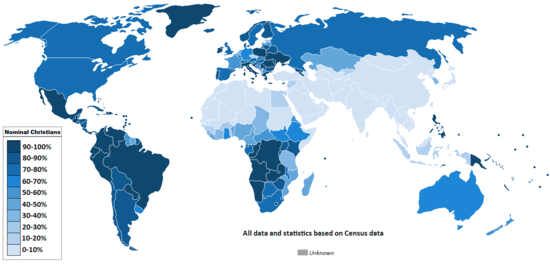
While classical Roman and Hellenistic religion were ultimately superseded by Christianity, many key theological ideas and questions that are characteristic of Western religions originated with pre-Christian theology. The first cause argument for the existence of God, for instance, originates with Plato. Design arguments, which were introduced by Socrates and Aristotle and remain widely discussed to this day, formed an influential component of Stoic theology well into the late Roman period. The Problem of evil was widely discussed among ancient philosophers, and many of the answers they provided were later absorbed into Christian theodicy. In Christian moral theology, moreover, the field of natural law ethics draws heavily on the tradition established by Aristotle and the Stoics.
Christianity itself also spread through the Roman Empire; since emperor Theodosius I (AD 379-395), the official state church of the Roman Empire was Christianity. Subsequently, former Roman territories became Christian states which exported their religion to other parts of the world, through colonization and missionaries.
Christianity also served as a conduit for preserving and transmitting Greco-Roman literary culture. Classical educational tradition in the liberal arts was preserved after the fall of the empire by the medieval Christian university. Education in the Middle Ages relied heavily on Greco-Roman books such as Euclid's Elements and the influential quadrivium textbooks written in Latin by the Roman statesman Boethius (AD 480–524).
Furthermore, early Christians read and wrote major works of Greek and Latin literature. Many of the most influential works of the early Christian tradition were written by Roman and Hellenistic theologians who were well read in the literature of the time and engaged heavily with the culture of the empire (see church fathers). St. Augustine's (AD 354-430) City of God, for instance, draws extensively on Virgil, Cicero, Varro, Homer, Plato, and elements of Roman values and identity to criticize paganism and advocate for Christianity amidst a crumbling empire. The engagement of early Christians as both readers and writers of important Roman and Greek literature helped to ensure that the literary culture of Rome would persist after the fall of the empire. For thousands of years to follow, religious scholars in the Latin West from Bede to Thomas Aquinas and later renaissance figures such as Dante, Montaigne and Shakespeare would continue to read, reference and imitate both Christian and pagan literature from the Roman Empire. In the east, the empire's prolific tradition of Greek literature continued uninterrupted after the fall of the west, in part due to the works of the Greek fathers, who were widely read by Christians in medieval Byzantium and continue to influence religious thought to this day (see Byzantine literature).
Science and philosophy

While much of the most influential Greek science and philosophy was developed before rise of the Empire, major innovations occurred under Roman rule that have had a lasting impact on the intellectual world. The traditions of Greek, Egyptian and Babylonian scholarship continued to flourish at great centers of learning such as Athens, Alexandria, and Pergamon.
Epicurean philosophy reached a literary apex in the long poem by Lucretius, who advocated an atomic theory of matter and revered the older teachings of the Greek Democritus. The works of the philosophers Seneca the Younger, Epictetus and the Roman emperor Marcus Aurelius were widely read during the revival of Stoic thought in the Renaissance, which synthesized Stoicism and Christianity. Fighter pilot James Stockdale famously credited the philosophy of Epictetus as being a major source of strength when he was shot down and held as prisoner during the Vietnam War. Plato's philosophy continued to be widely studied under the Empire, growing into the sophisticated neoplatonic system through the influence of Plotinus. Platonic philosophy was largely reconciled with Christianity by the Roman theologian Augustine of Hippo, who, while a staunch opponent of Roman paganism, viewed the Platonists as having more in common with Christians than the other pagan schools.[14] To this day, Plato's Republic is considered the foundational work of Western philosophy, and is read by students around the globe.
The widespread Lorem ipsum text, which is widely used as a meaningless placeholder in modern typography and graphic design, is derived from the Latin text of Cicero's philosophical treatise De finibus.
Pagan philosophy was gradually supplanted by Christianity in the later years of the Empire, culminating in the closure of the Academy of Athens by Justinian I. Many Greek-speaking philosophers moved to the east, outside the borders of the Empire. Neoplatonism and Aristotelianism gained a stronghold in Persia, where they were a heavy influence on early Islamic philosophy. Thinkers of the Islamic Golden Age such as Ibn Sina (Avicenna) and Ibn Rushd (Averroës) engaged deeply with Greek philosophy, and played a major role in saving works of Aristotle that had been lost to the Latin West. The influence of Greek philosophy on Islam was dramatically reduced In the 11th century when the views of Avicenna and Avveroes were strongly criticized by Al-Ghazali. His Incoherence of the Philosophers is among the most influential books in Islamic history. In Western Europe, meanwhile, the recovery of Greek texts during the Scholastic period had a profound influence on Latin science and theology from the Middle Ages into the Renaissance.
In science, the theories of the Greco-Roman physician Galen dominated Western medical thought and practice for more than 1,300 years. Ptolemy produced the most thorough and sophisticated astronomical theory of antiquity, documented in the Almagest. The Ptolemaic model of the solar system would remain the dominant approach to astronomy across Europe and the Middle East for more than a thousand years.
At Alexandria, the engineer and experimentalist Hero of Alexandria founded the study of mechanics and pneumatics. In modern geometry, Heron's formula bears his name. Roman Alexandria also saw the seeds of modern algebra arise in the works of Diophantus. Greek algebra continued to be studied in the east well after the fall of the Western Empire, where it matured into modern algebra in the hands of al-Khwārizmī (see the history of algebra). The study of Diophantine Equations and Diophantine Approximations are still important areas of mathematical research today.
Roman law and politics
.png)
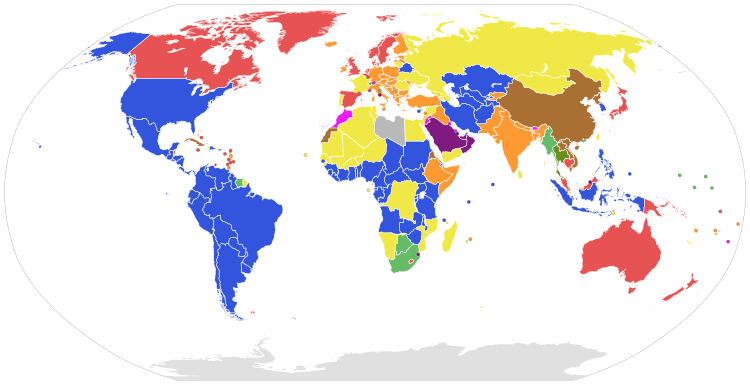
Although the law of the Roman Empire is not used today, modern law in many jurisdictions is based on principles of law used and developed during the Roman Empire. Some of the same Latin terminology is still used today. The general structure of jurisprudence used today, in many jurisdictions, is the same (trial with a judge, plaintiff, and defendant) as that established during the Roman Empire.
The modern concept of republican government is directly modeled on the Roman Republic. The republican institutions of Rome survived in many of the Italian city-states of the Middle Ages and the Renaissance. The United States Congress is inspired by the Roman senate and legislative assemblies, while the president holds a position similar to that of a Roman consul. Many European political thinkers of the Enlightenment were avid consumers of Latin literature. Montesquieu, Edmund Burke, and John Adams were all strongly influenced by Cicero, for instance. Adams recommended Cicero as a model for politicians to imitate, and once remarked that "the sweetness and grandeur of his sounds, and the harmony of his numbers give pleasure enough to reward the reading if one understood none of his meaning."[16]
Inventions

Many Roman inventions were improved versions of other people's inventions and ranged from military organization, weapon improvements, armour, siege technology, naval innovation, architecture, medical instruments, irrigation, civil planning, construction, agriculture and many more areas of civic, governmental, military and engineering development.
That said, the Romans also developed a huge array of new technologies and innovations. Many came from common themes but were vastly superior to what had come before, whilst others were totally new inventions developed by and for the needs of Empire and the Roman way of life.
Some of the more famous examples are the Roman aqueducts (some of which are still in use today), Roman roads, water powered milling machines, thermal heating systems (as employed in Roman baths, and also used in palaces and wealthy homes) sewage and pipe systems and the invention and widespread use of concrete.
Metallurgy and glass work (including the first widespread use of glass windows) and a wealth of architectural innovations including high rise buildings, dome construction, bridgeworks and floor construction (seen in the functionality of the Colosseum's arena and the underlying rooms/areas beneath it) are other examples of Roman innovation and genius.
Military inventiveness was widespread and ranged from tactical/strategic innovations, new methodologies in training, discipline and field medicine as well as inventions in all aspects of weaponry, from armor and shielding to siege engines and missile technology.
This combination of new methodologies, technical innovation, and creative invention in the military gave Rome the edge against its adversaries for half a millennium, and with it, the ability to create an empire that even today, more than 2000 years later, continues to leave its legacy in many areas of modern life.
Colonies and roads
Rome left a legacy of founding many cities as Colonia. There were more than 500 Roman colonies spread through the Empire, most of them populated by veterans of the Roman legions. Some Roman colonies rose to become influential commercial and trade centers, transportation hubs and capitals of international empires, like Constantinople, London, Paris and Vienna.
This list below is incomplete and does not intend to be exhaustive.
| Roman name | modern-day | Country |
|---|---|---|
| Augusta Praetoria | Aosta | Italy |
| Bononia | Bologna | Italy |
| Florentia | Florence | Italy |
| Modica | Monza | Italy |
| Placentia | Piacenza | Italy |
| Ariminum | Rimini | Italy |
| Roma | Rome | Italy |
| Salernum | Salerno | Italy |
| Augusta Taurinorum | Turin | Italy |
| Vindobona | Vienna | Austria |
| Iuvavum | Salzburg | Austria |
| Lentia | Linz | Austria |
| Claudia Augusta Lugdunum | Lyon | France |
| Lutetia Parisiorum | Paris | France |
| Divodurum | Metz | France |
| Samarobriva | Amiens | France |
| Vesontio | Besançon | France |
| Augusta Vindelicorum | Augsburg | Germany |
| Bonna | Bonn | Germany |
| Colonia Agrippina | Cologne | Germany |
| Bonames (present city district) | Frankfurt am Main | Germany |
| Mogontiacum | Mainz | Germany |
| Augusta Treverorum | Trier | Germany |
| Ratae Corieltauvorum | Leicester | UK |
| Londinium | London | UK |
| Mancunium | Manchester | UK |
| Ebocarum | York | UK |
| Pons Aelius | Newcastle upon Tyne | UK |
| Aquincum | Budapest | Hungary |
| Caesarea | Caesarea | Israel |
| Emona | Ljubljana | Slovenia |
| Cesaraugusta | Zaragoza | Spain |
| Corduba | Cordoba | Spain |
| Augusta Emerita | Mérida | Spain |
| Legio | León | Spain |
| Hispalis | Seville | Spain |
| Valentia | Valencia | Spain |
| Portus Victoriae Iuliobrigensium | Santander | Spain |
| Lousonna | Lausanne | Switzerland |
| Turicum | Zurich | Switzerland |
| Municipium Aeminium | Coimbra | Portugal |
| Constantinopolis | Istambul | Turkey |
All those colonies were connected by another important legacy of the Roman Empire: the Roman roads. Indeed, the empire comprised more than 400,000 km of roads, of which over 80,500 kilometres (50,000 mi) were stone-paved.[17] The courses (and sometimes the surfaces) of many Roman roads survived for millennia. Many are overlaid by modern roads, like the Via Emilia in northern Italy.
Architecture

In the mid-18th century, Roman architecture inspired neoclassical architecture. Neoclassicalism was an international movement. Though neoclassical architecture employs the same classical vocabulary as late Baroque architecture, it tends to emphasize its planar qualities, rather than sculptural volumes. Projections and recessions and their effects of light and shade are flatter; sculptural bas-reliefs are flatter and tend to be enframed in friezes, tablets or panels. Its clearly articulated individual features are isolated rather than interpenetrating, autonomous and complete in themselves.
International neoclassical architecture was exemplified in Karl Friedrich Schinkel's buildings, especially the Old Museum in Berlin, Sir John Soane's Bank of England in London and the newly built White House and Capitol in Washington, DC in the United States. The Scots architect Charles Cameron created palatial Italianate interiors for the German-born Catherine II the Great in St. Petersburg.
Italy clung to Rococo until the Napoleonic regimes brought the new archaeological classicism, which was embraced as a political statement by young, progressive, urban Italians with republican leanings.
Imperial idea
The Roman line continued uninterrupted to rule the Eastern Roman Empire, whose main characteristics were Roman concept of state, medieval Greek culture and language, and Orthodox Christian faith. The Byzantines themselves never ceased to refer to themselves as "Romans" (Rhomaioi) and to their state as the "Roman Empire", the "Empire of the Romans" (in Greek Βασιλεία των Ῥωμαίων, Basileía ton Rhōmaíōn) or "Romania" (Ῥωμανία, Rhōmanía). Likewise, they were called "Rûm" (Rome) by their eastern enemies to the point that competing neighbours even acquired its name, such as the Sultanate of Rûm.

The designation of the Empire as "Byzantine" is a retrospective idea: it began only in 1557, a century after the fall of Constantinople, when German historian Hieronymus Wolf published his work Corpus Historiæ Byzantinæ, a collection of Byzantine sources. The term did not come in general use in the Western world before the 19th century , when modern Greece was born. The end of the continuous tradition of the Roman Empire is open to debate: the final point was the capture of Constantinople in 1453 AD, while some place it at the sack of Constantinople by the crusaders in 1204.
In Western Europe, the Roman concept of state was continued for almost a millennium by the Holy Roman Empire whose emperors, mostly of German tongue, viewed themselves as the legitimate successors to the ancient imperial tradition (King of the Romans) and Rome as the capital of its Empire. The German title of "Kaiser" is derived from the Latin word for "Caesar". The word Caesar is pronounced /kae:sar/ in Classical Latin. The Holy Roman Empire was dissolved in 1806 owing to pressure by Napoleon I. In the early 20th century, the Italian fascists under their "Duce" Benito Mussolini dreamed of a new Roman Empire as an Italian one, encompassing the Mediterranean basin.
In Eastern Europe, the Russian czars (Czar derived from Caesar) adopted the idea of Moscow in Russia being a Third Rome (with Constantinople being the second). Sentiments of being the heir of the fallen Eastern Roman Empire began during the reign of Ivan III, Grand Duke of Moscow who had married Sophia Paleologue, the niece of Constantine XI, the last Eastern Roman Emperor. Being the most powerful Orthodox Christian state, the Tsars were thought of in Russia as succeeding the Eastern Roman Empire as the rightful rulers of the Orthodox Christian world. There were also competing Bulgarian, Wallachian[18][19] and Ottoman claims for legal succession of the Roman Empire, Mehmet II "the Conqueror" claiming the title Kayser-i Rûm, meaning Caesar of Rome.
Names of the planets
| |||
| Planets named after Roman Gods |
Barring Uranus and Earth, the planets in our Solar System are named after Roman deities.
See also
- Western Roman Empire
- Byzantine Empire
- Legacy of Byzantium
- Third Rome
- Eastern Romance substratum
- Origin of the Romanians
General:
References
- ↑ See History of Latin.
- ↑ "Language Acquisition in the Romance Speaking World: Peru - Departamento de Educación". Departamento.pucp.edu.pe. Retrieved 2016-05-14.
- ↑ "Manual of Language Acquisition - Google Libros". Books.google.es. 2014-08-25. Retrieved 2016-05-14.
- ↑ "Multilingualism, Education and Change - Jean Jacques Weber - Google Libros". Books.google.es. Retrieved 2016-05-14.
- ↑ "Language in the Media: Representations, Identities, Ideologies - Google Libros". Books.google.es. 2007-09-19. Retrieved 2016-05-14.
- ↑ "I nomi dei fiumi, dei monti, dei siti: strutture linguistiche preistoriche - Claudio Beretta - Google Libros". Books.google.es. Retrieved 2016-05-14.
- ↑ USA (2015-09-28). "Radiation oncology in Latin speaking countries: A link between Europe and Latin America. - PubMed - NCBI". Ncbi.nlm.nih.gov. Retrieved 2016-05-14.
- ↑ Finkenstaedt, Thomas; Dieter Wolff (1973). Ordered Profusion; studies in dictionaries and the English lexicon. C. Winter. ISBN 3-533-02253-6.
- ↑ Uwe Pörksen, German Academy for Language and Literature’s Jahrbuch [Yearbook] 2007 (Wallstein Verlag, Göttingen 2008, pp. 121-130)
- 1 2 Loanwords in the World's Languages: A Comparative Handbook (PDF). Walter de Gruyter. 2009. p. 370.
- ↑ "Incunabula Short Title Catalogue". British Library. Retrieved 2 March 2011.
- ↑ Roberto Weiss, The Renaissance Discovery of Classical Antiquity (Oxford: Blackwell) 1969:1.
- ↑ Roberts & Skeat 1983, pp. 38−67; 75
- ↑ Agustine, De Civitate Dei, book viii.
- ↑ Alphabetical Index of the 192 United Nations Member States and Corresponding Legal Systems, Website of the Faculty of Law of the University of Ottawa
- ↑ Carl J. Richard, Why We're All Romans: The Roman Contribution to the Western World, Rowman & Littlefield Publishers, 2010, p. 122.
- ↑ Gabriel, Richard A. The Great Armies of Antiquity. Westport, Conn: Praeger, 2002. Page 9.
- ↑ Clark, Victoria (2000). "Chapter 5: Romania". Why Angels Fall. New York: St. Martin's Press: Macmillan. p. 213. ISBN 978-0-312-23396-9.
- ↑ Runciman, Steven (1985). "Chapter 10: The Phanariots". The Great Church in Captivity. Cambridge [Cambridgeshire]; New York: Cambridge University Press. p. 365. ISBN 978-0-521-31310-0.
Sources
- Roberts, Colin H.; Skeat, T. C. (1983), The Birth of the Codex, London: Oxford University Press, ISBN 0-19-726024-1
